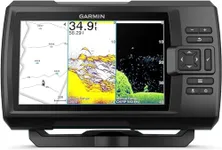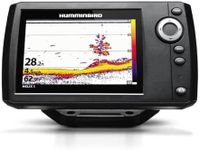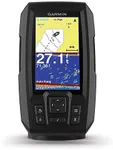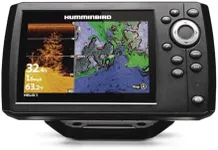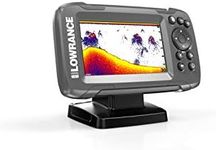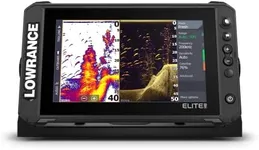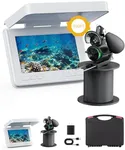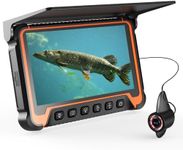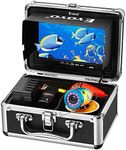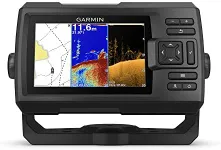Buying Guide for the Best Handheld Fish Finder
Choosing the right handheld fish finder can significantly enhance your fishing experience by helping you locate fish more efficiently. When selecting a fish finder, it's important to consider various specifications that will determine how well the device meets your needs. Understanding these key specs will help you make an informed decision and ensure you get the best fit for your fishing style and environment.FrequencyFrequency refers to the number of sound waves the fish finder emits per second. It is important because it affects the depth and clarity of the readings. Lower frequencies (50 kHz) penetrate deeper waters but provide less detail, making them suitable for deep-sea fishing. Higher frequencies (200 kHz) offer more detailed images but are better for shallow waters. If you fish in various environments, a dual-frequency fish finder that offers both options might be the best choice.
PowerPower is measured in watts and determines how well the fish finder can send and receive signals. Higher power units provide better performance in deeper waters and can offer clearer images. For shallow waters, a lower power unit may suffice. If you often fish in deep or murky waters, opt for a higher wattage to ensure accurate readings.
Screen ResolutionScreen resolution indicates the clarity of the display, measured in pixels. A higher resolution means a clearer and more detailed image, which is crucial for identifying fish and underwater structures. If you need precise details, choose a fish finder with a high-resolution screen. For casual fishing, a lower resolution might be adequate.
TransducerThe transducer is the part of the fish finder that sends and receives sonar signals. Its quality and type are crucial for accurate readings. Transducers come in different shapes and sizes, and some offer additional features like temperature sensors. Consider the type of water you fish in and the kind of information you need when choosing a transducer.
GPS IntegrationGPS integration allows the fish finder to provide navigation and location tracking. This feature is important for marking fishing spots, navigating unfamiliar waters, and ensuring you can return to productive areas. If you fish in large or unfamiliar bodies of water, a fish finder with GPS integration can be very beneficial.
PortabilityPortability refers to the ease with which you can carry and use the fish finder. Handheld models are designed to be lightweight and easy to transport, making them ideal for shore fishing, kayaking, or moving between different fishing spots. Consider how and where you fish to determine the level of portability you need.
Battery LifeBattery life is crucial for ensuring your fish finder lasts throughout your fishing trip. Longer battery life means you can spend more time on the water without worrying about recharging. If you plan on long fishing trips or don't have easy access to charging facilities, choose a model with extended battery life.
